#naturkunde
Explore tagged Tumblr posts
Photo

..
#dark academia#animals#biology#natural history#decapoda#marine#crustacea#dark aesthetic#tiere#natural history museum#naturkunde#underwater#naturkundemuseum#museum aesthetic#museum#dark#dunkel#animal#tier#aquatic#biologie#arthropoda#frankfurt#academia aesthetic#crayfish#lobster#crab
24 notes
·
View notes
Text










20 notes
·
View notes
Text

Clever Clover is regarding the pickled specmins at the Museum für Naturkunde (Natural History Museum) in Berlin.
In Germany.
#my little pony#g2#clever clover#dead#dead things#specimins#pickled#Museum für Naturkunde#natural history museum#berlin#germany
11 notes
·
View notes
Text
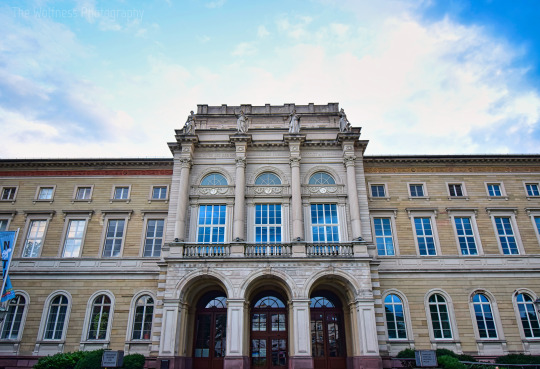

State Museum of Natural History
Karlsruhe. Germany
#architecture#architecture photography#exterior#exterior architecture#exterior photography#details#architecture details#old building#museum#museum building#sky#clouds#sculptures#statues#renaissance#renaissance architecture#old town#state museum#natural history museum#Staatliches Museum für Naturkunde Karlsruhe#Staatliches Museum für Naturkunde#photographer on tumblr#original photography#original photographers#original photography on tumblr#baden württemberg#Karlsruhe#Germany
32 notes
·
View notes
Text
The Dementor Wasp
The largest of the 170 or species of the Ampulicidae family, the dementor wasp is native to Thailand, red and black in colour, and the females are about ten millimetres long. They are probably worth avoiding, especially if you are a cockroach. According to a study published in 2010 in Communicative and Integrative Biology. The wasp injects the brain of its cockroach victim with a toxin that…

View On WordPress
0 notes
Text
Atemwegsinfekte bye-bye! Dank Inhalationen, Wickel und Senfölen bekomme ich endlich gut Luft
Bei #Atemwegsinfekten machen #Antibiotika eigentlich keinen Sinn. Trotzdem bekommt laut Uni Rostock jeder fünfte bis sechste Atemwegs-Patient das Medikament verordnet. Wie es anders geht, dazu meine neue #Patientenreportage aus der #klinikhattingen
Hartnäckig. Aus Angst vor einem Infekt hätte Susanne Weber ihre Wohnung Anfang 2023 am besten gar nicht mehr verlassen. „Ein hüstelnder Kollege in unserem Großraumbüro, ein keimbelasteter Einkaufswagen, eine viertel Stunde im Windzug am Bahnhof – in den letzten 18 Monaten konnte ich gar nicht so schnell gesund werden, wie ich mir den nächsten Infekt einfing“, blickt die Grafikerin aus Essen…
#André Berger#antientzündlich#Brustwickel#Dr. Birke Müller#Erfahrung mit Angocin#featured#Gesundheit#Hattingen#Husten#Infektabwehr#Kapuzinerkresse Meerrettich#Klinik Blankenstein#Medizinjournalist#Naturheilkunde#Naturkunde-Abteilung#NRW#Patientenfall#Patientenreportage#Patientenschicksal#Senföle#Senfölkombination#Soleinhalationen#Thymian#Was hilft bei Atemwegsinfekten
0 notes
Text

Der Blick. / 09.08.2024
#Berlin#Berlin Mitte#Owls#Museum für Naturkunde Berlin#Invalidenstraße#Strigologie#2024#2024August#2024August09
1 note
·
View note
Text
New book review!

Museum für Naturkunde: The Exhibitions by Gesine Steiner, et al.
Link
0 notes
Note
Is there an online register of different frog species' sounds that you would recommend?
There is no one good place to go, but
iNaturalist.org has a lot
xeno-canto.org just added frogs, and is probably the best in terms of data and UI
Macaulay library has some
FonoZoo is horribly built but has quite a few
Museum für Naturkunde Berlin's Animal Sound Archive is horribly built but has quite a few
Hope that helps!
347 notes
·
View notes
Text

A lineup of Cambrian critters at the Naturkunde Museum Stuttgart. If you can’t see most of them: they’re in the glass display at the bottom, with a moveable magnifying glass provided. And then there’s Anomalocaris.
Closer look at Hallucigenia:
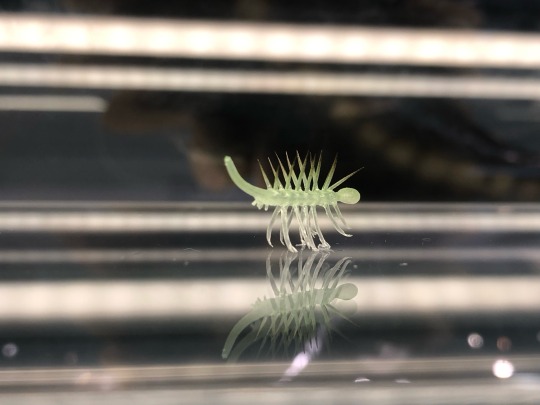
2K notes
·
View notes
Photo

..
#natural history#dark academia#animals#biology#paris#original photography#naturkunde#academia aesthetic#tiere#original photographers#biologie#natural history museum#naturkundemuseum#bones#france#bone#knochen#skeleton#skelett#reptiles#reptilien#dark aesthetic#alligator#reptilia#sauropsida#archosauria#diapsida
35 notes
·
View notes
Photo
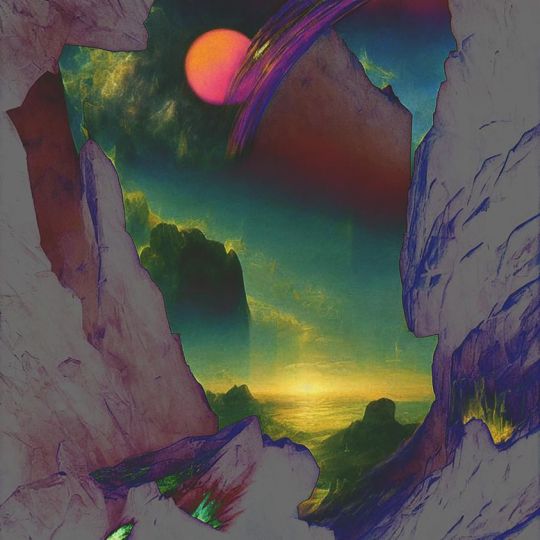
The Changing Natures: Ecocene game is a collaboration of Trust (Calum Bowden @calsbot & Son La Pham @thinnertheair) and the project “Changing Natures” at Museum für Naturkunde Berlin and Muséum national d’Histoire naturelle, Paris, funded by the Federal Ministry of Education and Research (BMBF) and the Ministère de l‘Enseignement supérieur et de la Recherche (MESR).
606 notes
·
View notes
Text
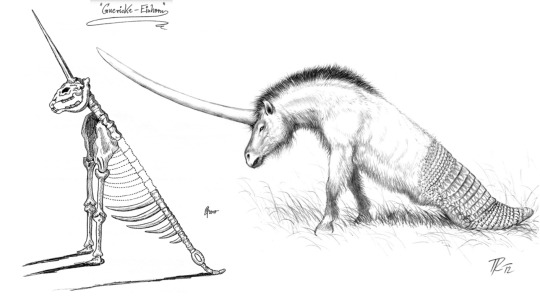
The Magdeburg unicorn [Bad paleontological reconstruction; miscellaneous]
I have a different kind of creature this week, because it's April 1st!
In 1663, quarry workers excavated a bunch of odd skeletons near Quedlinburg, Germany. Otto von Guericke, the mayor of Magdeburg at the time and also a local scientist, identified the reconstructed creature as a ‘unicorn’ in his report in 1678. The creature had a slightly curved horn of 5 ellen (about 2.3m) long. Otto also mentioned that the remains were damaged due to the clumsy removal of the bones by the quarry workers.
In truth, the workers had found the remains of Pleistocene animals, including the front legs of a mammoth, what appears to be a woolly rhinoceros skull and either the tooth of a narwhal or an elephant tusk. The bones are not identified with 100% certainty because the reconstruction became lost to time.
Forty years later, another unicorn horn had been found (this one was actually the tusk of a straight-tusked elephant). Several respected scientists (including Gottfried Leibniz) would eventually confirm that these were indeed the remains of a unicorn. In 1714, Valentine published his somewhat clumsy attempt at a reconstruction of what he believed to be a fossilized unicorn. If palaeontologists or paleobiologists at the time had any theories about the ecology of the creature, they might have been lost to time, as I couldn’t find anything about it. Going by the contemporary illustrations, perhaps the Einhorn might have been assumed to hop around like a kangaroo, or maybe it was a slow walker, dragging its tail behind it.

The Museum für Naturkunde in Magdeberg currently displays the famous model of the reconstruction (a double reconstruction, if you will, for the original reconstruction got lost). Today, the ‘Guericke Einhorn’ is widely used as a textbook example of a bad paleontological reconstruction, though in Guericke’s defense, the mistake wasn’t as obvious back in the 17th century as it is today. Several unusual bones were found closely together and were incorrectly assumed to be part of a singular, puzzling animal, as Guericke obviously didn’t have access to the current knowledge about each of the Einhorn’s component animals.
The Sewecken Hills area actually has a very rich Pleistocene fossil record – the Lampe collection being famously catalogued by Alfred Nehring in 1904 – but at least for the time being, unicorn fossils remain absent from this list.
Sources: Diedrich, C. G., 2021, Unicorn ‘Holotype’ skeleton from the Late Pleistocene spotted hyena den site Sewecken-Berge (Germany), Acta Zoologica, 104(1), pp.1-70. Van Kolfschoten, T., 2021, The woolly rhinoceros from Seweckenberge near Quedlinburg (Germany), in: S. Gaudzinski-Windheuser, O. Jöris, The Beef behind all Possible Pasts, pp. 39-48. DOI:10.11588/propylaeum.868.c11306 (image 1: image on the left: a 2011 redrawing by Elke Grönig of Leibnitz’ 1749 illustration. Right: 2012 drawing by George Teichmann based on the famous reconstruction) (image source 2: Reddit user and_so_forth)
#creatures#miscellaneous#mythical creatures#well not really a mythical creature#but I think it's a great fit for April Fools day!
91 notes
·
View notes
Text
A new study shows that, contrary to previous assumptions, female common frogs can reject males and have developed a variety of mate avoidance behaviors to do so. The research was led by Carolin Dittrich and Mark-Oliver Rödel from the Museum für Naturkunde in Berlin and was published in the open access journal Royal Society Open Science. Explosive breeding species are frogs or toads with a very short reproductive period. Breeding is usually limited to a few days to two weeks in early spring. During this time hundreds to thousands of animals gather at a pond. The females must grow older to breed and are often unable to breed every year, but the males still gather at the pond every year. Thus, the males outnumber the females by a large margin and compete for the rarer sex. The males are not choosy and will cling to anything that moves with great vigor. If another male is caught, he will give a "release-call" to indicate the mistake to the grabbing male. It was previously thought that the females in these spawning aggregations could not defend themselves against male coercion. It is not uncommon for many males to cling to a single female, forming a "mating ball." The female often dies in the process. Dittrich and Rödel have now shown that females do know how to defend themselves using very different behaviors.
Continue Reading.
174 notes
·
View notes
Text
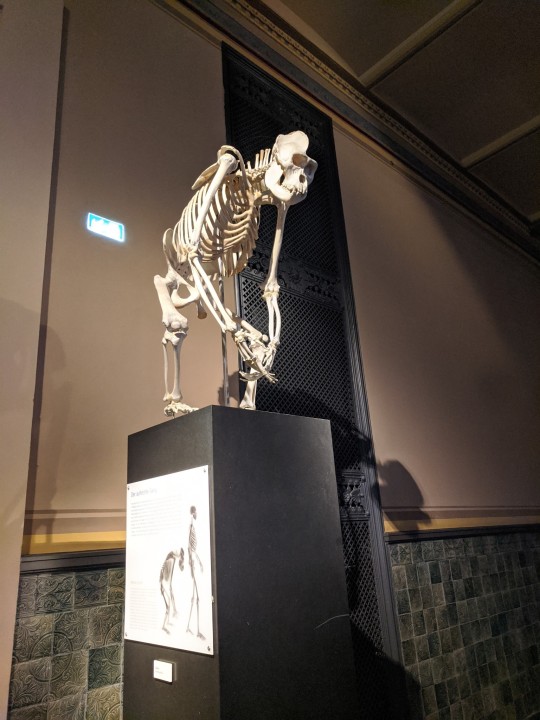
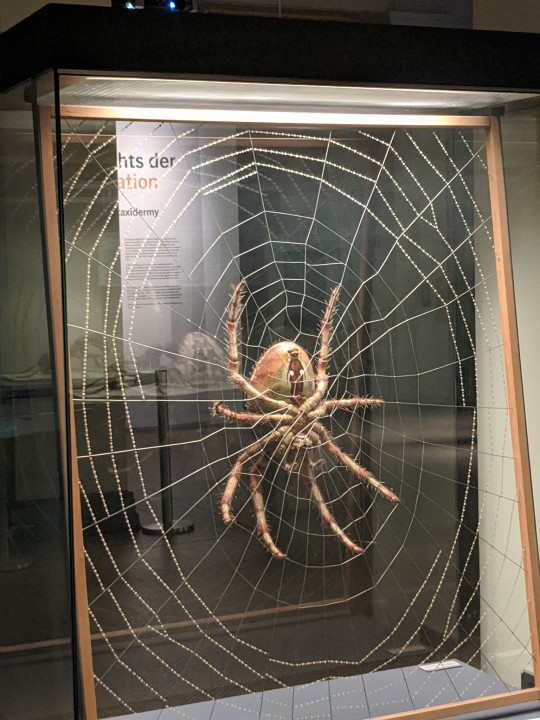
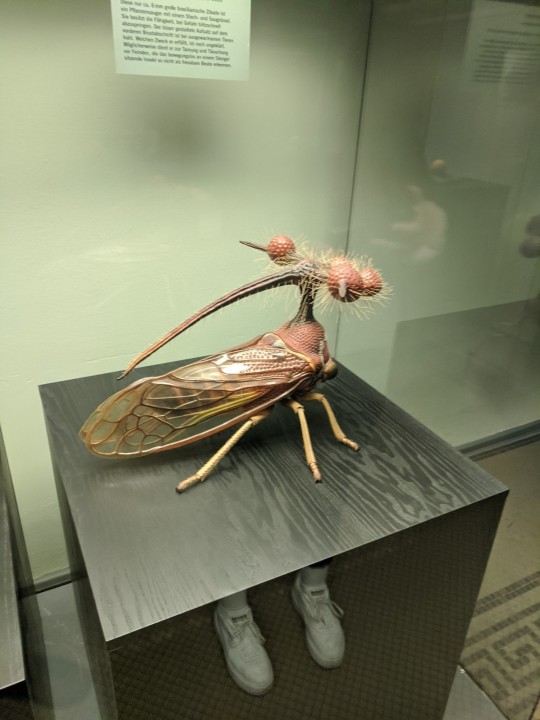




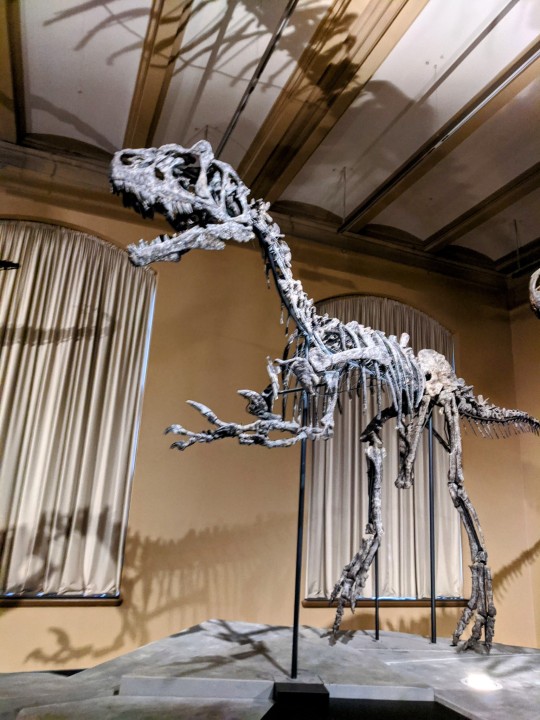
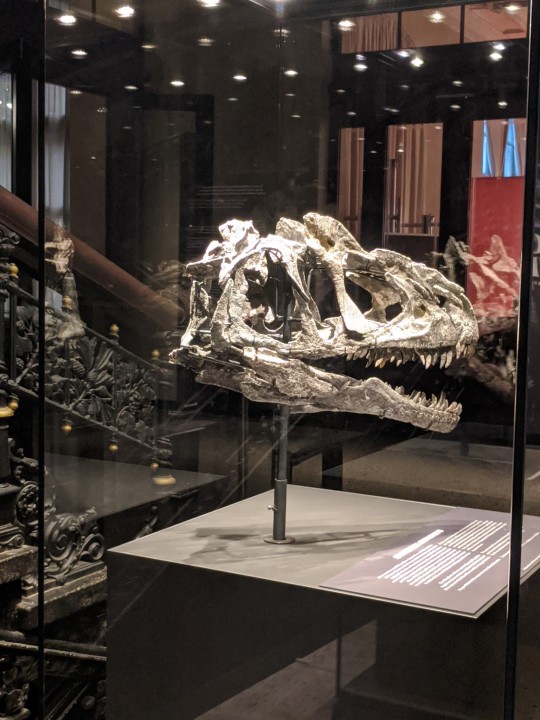
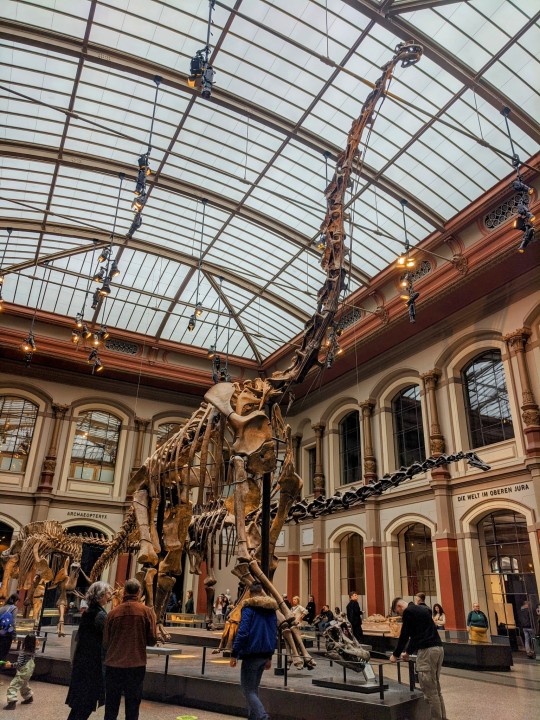
I recently went to the Museum für Naturkunde which roughly translates to Museum of Natural History in Berlin.
This was my first ever experience of seeing actual dinosaurs(or whatever remains of them)
I also got to see their least favourite reindeers, which are comets basically.
I realized I will never be tired of visiting museums (even though the moralities are always in question when it comes to museums and zoos)
Nonetheless it was a cherished experience.
#museums#berlin#dinosaur#naturkundemuseum#comets#dinosaur jokes#celestial dust#celestial objects#largest dinosaur#science#biology#anthropology#paleontology#funny
550 notes
·
View notes
Text

Die Fledermäuse des Berliner Museums für Naturkunde (1899)
#bats#bat#19th century#goth aesthetic#gothic aesthetic#illustrations#illustration#vampire bat#animal kingdom#literature#Bats 19th century illustration#museum#1899
30 notes
·
View notes